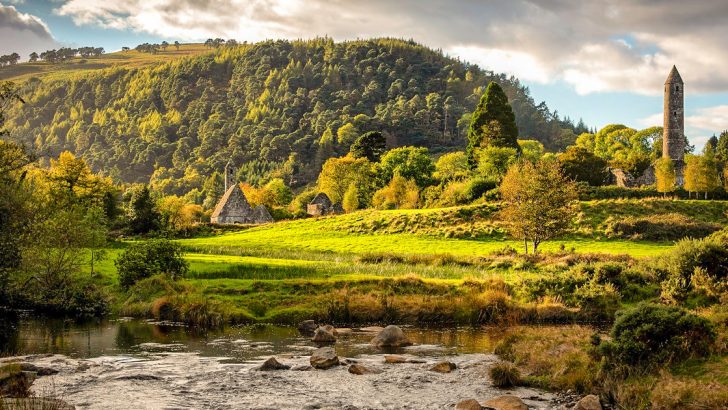Ireland Through Birds: Journeys in search of a wild nation
by Conor W. O’Brien (Merrion Press, €16.95)
Christopher Moriarty
Like many, perhaps the majority of, birdwatchers, Conor W. O’Brien became addicted to the hobby in childhood. He shares his joy in encounters with birds and the wild environment in general in this remarkable book.
Taking 12 spectacular species, he pursues each one in a different location. The chosen spots range from remote islands, through Dublin’s Phoenix Park to the sacred valley of Glendalough and a few other varieties of mainland habitats. The result is a pot-pourri of descriptions of the 12 birds and of the country he walks through in their pursuit together with a scattering of folklore and local history.
There are many items of great interest which serve, above all else, to demonstrate the success of conservationists, both amateur and professional, in preserving substantial examples of just about every major type of habitat that existed in Ireland prior to the 20th Century.
Good work
This good work has succeeded in maintaining the survival in our country of all of the species which were present in its earliest years. While a very small number are ‘endangered’ and receiving special attention, a much more significant development has been the increase in numbers of many once scarce species and the arrival to stay of a number previously either unknown on our island or once present and hunted to extinction.
Taking 12 spectacular species, the author pursues each one in a different location”
One of the most impressive of the author’s 12 birds is the goosander and the place where he goes to see it, Glendalough, is justly famed far and wide for a great deal more than its avifauna.
An exceptionally handsome, colourfully marked white drake with fish-eating habits far removed from those of most of the hundreds of other duck species, it was virtually unknown in Ireland until the second half of the 20th Century.
Then a number of pairs arrived and settled to breed. Their arrival presented the wildlife authorities with a problem. At about the same time, one of the rarest, most beautiful and most treasured of Ireland’s native furry beasts, the pine marten was also enjoying resurgence.
Pine martens eat the eggs and young of goosander if they can. So steps, apparently successful, to accommodate both have been taken and are described in relationship to Glendalough
O’Brien recounts, for the same valley, some legends of St Kevin relating to his care for wild birds and animals. However embellished and unlikely the old tales may be, they point to a concern for nature by one of the leading minds of his time and this suggests that such considerations may have widely been accepted.
They certainly show that the concept of care for the environment has a long, if interrupted, history in Ireland.
If the author embarks on another book it must be earnestly hoped that he finds a good copy editor and that he will avoid brief and simplistic ‘explanations’ of the behaviour of the birds that he describes and their scarcity or abundance.
He is far from being the only writer on birds who seem to be unaware that the meaningful study of their behaviour is so complex and time-consuming that very few species have ever been satisfactorily covered. It is relatively easy to describe what a species does – almost impossible to explain why and attempted explanations by and large serve to irritate rather than enlighten.
Readers, whatever their knowledge of birds and the environment, will be irritated by the occasions of questionable adjectives, frequent miss-spellings and a somewhat cavalier order of paragraphs.
Despite this, it’s a book which many devotees of the outdoor world will enjoy.


 Glendaloogh
Photo:Getyourguide.com
Glendaloogh
Photo:Getyourguide.com 